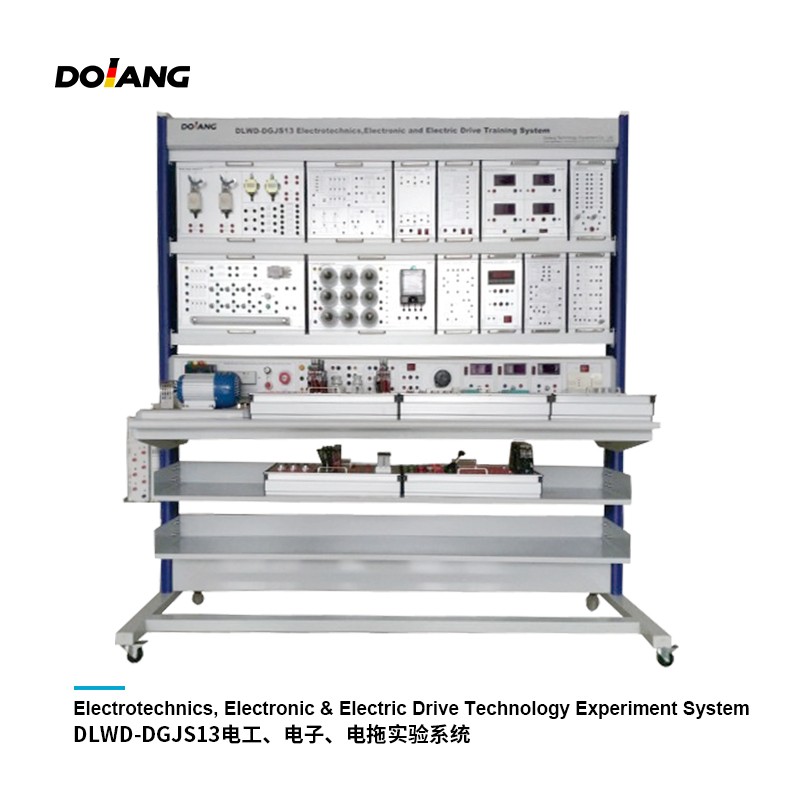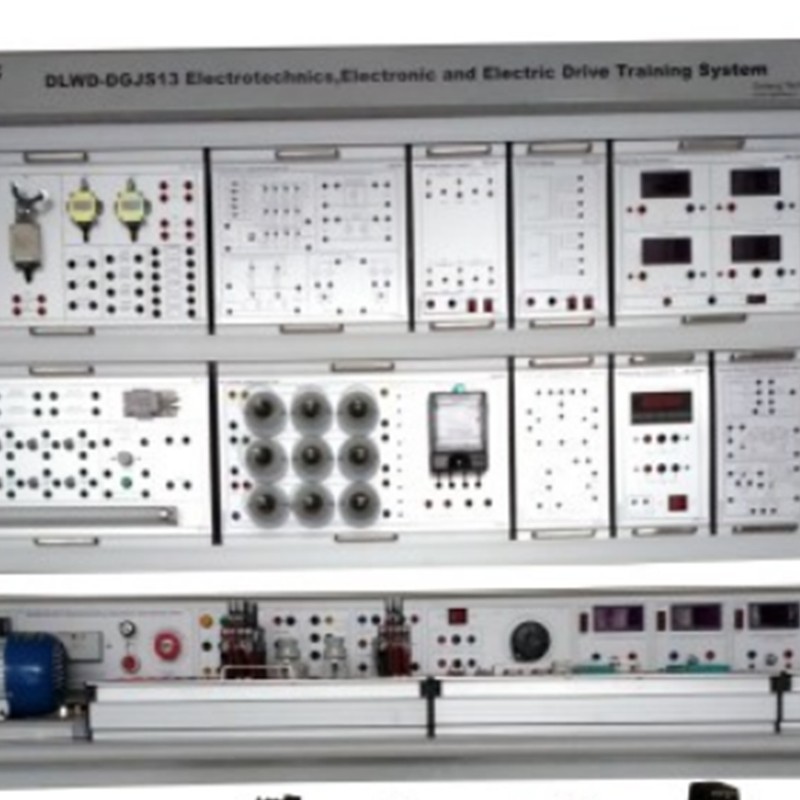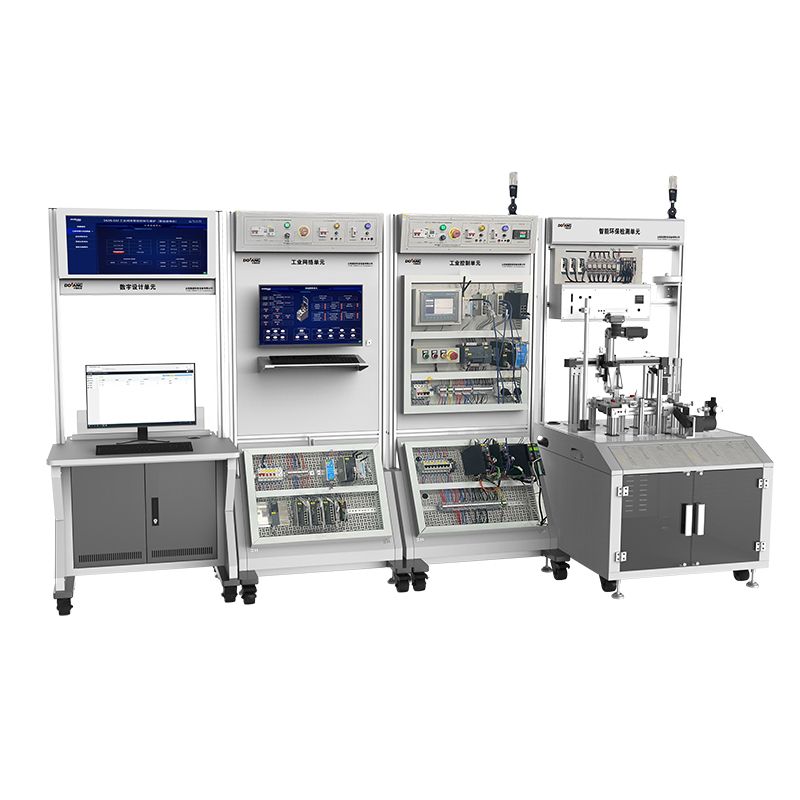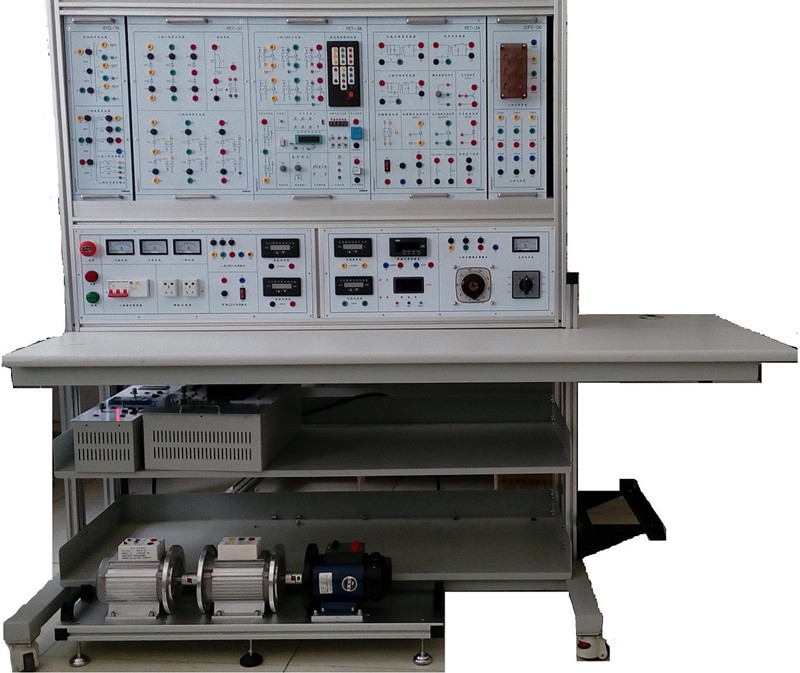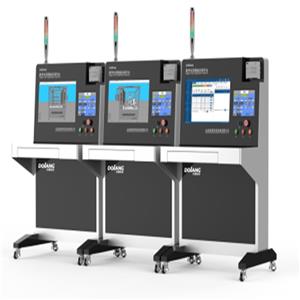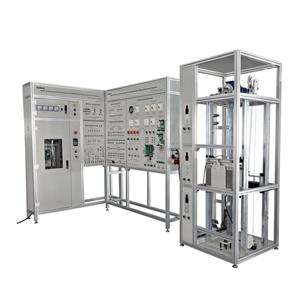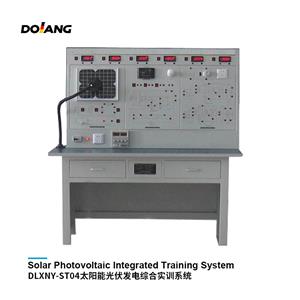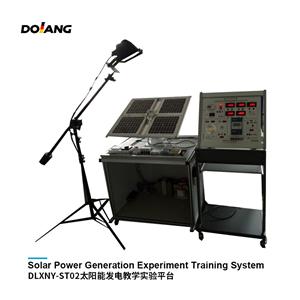DLWD-DGJS13 Electronic & Electric training kits of TVET equipment

- Dolang
- China
- 30-60DAYS
1. Strong intuitiveness: The main equipment adopts the directly exposed installation form, the equipment can be displayed in front of the students more intuitively, which shortens the transition and adaptation time of the students from the classroom to the industrial site.
2. Flexible structure: The system adopts a modular structure, the hanging box is easy to replace, and the system is more flexible in use and combination, which can meet various requirements such as experiment and training.
3. Strong comprehensiveness: It integrates all the experimental projects of the basic courses of electrical engineering in various domestic schools.
4. Close to the actual scene: The training content of this equipment is the mainstream technology application in the industrial scene, adapts to the development of current electrical technology, and can meet the needs of students for experimentation and course design.
5. Strong adaptability: The depth and breadth of the experiment can be flexibly adjusted according to needs, and popularization and improvement can be organically combined according to the teaching process.
6. The whole set is strong: from the special power supply to the special wire for experiment connection, it is complete.
7. Strong consistency: The selection of experimental devices is reasonable and the supporting facilities are complete, so that the results of multiple groups of experiments have good uniformity, and it is convenient for teachers to organize and guide teaching experiments.
8. Perfect protection: all the components of the system are required to be industrial electrical components. At the same time, taking into account the actual situation of students' use, protection functions such as protection interface boards are added to the input and output terminals of industrial components to avoid damage and damage to the equipment caused by repetitive, frequent and misoperation.
9. Strong subject extension: This training system can meet the requirements of "Electrical Engineering", "Electrical Skills Training", "Electrician Basics", "Electronic Skills", "Digital Circuit Skills", and "Analog Electronic Skills" of universities, technical secondary schools and technical colleges. "Electric Drag" and other related courses and electrical professional teaching and training requirements.
DLWD-DGJS13 Electronic & Electric training kits of TVET equipment
Equipment Overview
The DLWD-DGJS13 Electronic & Electric training kits of TVET equipment is a new type of experimental system based on the improvement of traditional electrical experimental equipment. The experimental system can meet the requirements of the "Electrical Basics", "Electrician Skills Training" and other related courses of undergraduates, colleges, technical schools and technical colleges. Teaching requirements for electrical engineering majors.
In order to meet the requirements of vocational education and practical training, the German "dual system" education model is introduced. After the introduction and digestion of foreign advanced vocational training teaching equipment under the guidance of returned overseas students, it is produced in strict accordance with German teaching equipment (DIN) standards The electrician and electric drag training equipment closest to the industrial site.
Technical Parameters
1 Input power: Three-phase five-wire 380V ± 10% 50Hz
2 Output power: AC 0-450V, AC0-220V safety terminal output, AC220V output socket security DC 1.25-30V and many groups DC power security terminal output
3 Working environment: temperature -10°C ~ + 40 C Relative humidity <85% (25 C) Altitude <4000m
4 System capacity: <1.5kVA
5 Dimensions: 1660 * 800 * 1840m
Training Content
1. Basic experiment of electrician
2. The use of basic electrical instruments and the calculation of measurement errors
3. Methods to reduce meter measurement error
4. Surveying and mapping of volt-ampere characteristics of linear and non-linear circuit components
5. Measurement of potential and voltage and drawing of circuit potential diagram
6. Kirchhoff's law verification
7. Verification of the superposition theorem
8. Equivalent transformation of voltage source and current source
9. Verification of Thevenin's Theorem
10. Verification of Norton's Theorem
11. Dual port network test
12. Verification of reciprocity theorem
13. Experimental research on controlled sources VCCS, VCVS, CCVS, CCCS
14. Observation and measurement of typical electrical signals
15. RC first-order circuit response test
16. Research on second-order dynamic circuit response
17. Test of impedance characteristics of R, L, C components
18. RC series and parallel frequency selection network characteristics test
19. Research on R, L, C series resonance circuit
20. Use the three-meter method to measure the equivalent parameters of AC circuits
21. Research on phasor of sinusoidal steady state AC circuit (fluorescent lamp power factor improvement experiment)
22. Single-phase iron core transformer characteristic test
23. Three-phase AC circuit voltage and current measurement
24. Three-phase circuit power measurement
25. Calibration of single-phase watt-hour meters
26. Negative impedance converter and its application
27. Rotor and its application
28. Electric drag experiment:
29. Direct start control of three-phase asynchronous motor
30. Three-phase asynchronous motor contactor jog control circuit
31. Three-phase asynchronous motor contactor self-locking control circuit
32.Y-△Start automatic control circuit
33. Button interlocking three-phase asynchronous motor contactor forward and reverse control circuit
34. Three-phase asynchronous motor dynamic braking control circuit
35. Transformerless half-wave rectification energy consumption braking control circuit
36. Full-wave rectification power consumption braking control circuit with transformer
(1) Sequence control of three-phase asynchronous motor
(2) Multi-site press system for three-phase asynchronous motors
37. Analog workbench automatic round-trip control line
38. Electronic experiment:
39. Amplifying circuit
40. Negative feedback amplifier circuit
41. Emitter follower
42. Common emitter amplifier circuit
43. Common collector amplifier circuit
44. Common base amplifier circuit
45. Complementary Symmetrical Power Amplifier
46. Basic parameter test of integrated operational amplifier
47. Integrated addition circuit
48. Integrated subtraction circuit
49. Integrated integral operation circuit
50. Integrated differential operation circuit
51. Proportional summation circuit
52. Integrated operational amplifier first-order active filter
53. Research on Voltage Comparator
54. Waveform generating circuit
55. Active filter
56. Integrated power amplifier
57. Integrated circuit RC sine wave oscillator
58. Rectifier filter and voltage regulator circuit
59. Series voltage regulator circuit
60. Integrated voltage regulator
61. Waveform conversion circuit
62. Transistor switching characteristics, limiters and clamps
63. Logic function and parameter test of TTL integrated logic gate
64. Logic function and parameter test of CMOS integrated logic gate
65. Combinational Logic Circuit
66. Trigger
67. Sequential Circuit Test and Research
68. Use gate circuit to generate pulse signal
69.555 time base circuit
FAQ
Q1. What other services can Dolang provide besides teachingequipment?
Answer: Curriculum standard, teacher courseware (PPT), teaching equipment training list, examination question bank, classroom task list, students' books (learning materials), teaching software, etc
Q2. What kind of certification?
Three system certification ISO9000, ISO14001, OHSMS28001; CE certification, SGS certification and Dolang are gold medal members of worlddidac.
Q3. What can Dolang do for our teachers?
Answer: a) Dolang group has Shandong Dolang vocational school, which is specially responsible for the training of teachers. Our national teacher training courses and provincial teacher training courses all cooperate with Dolang school;
B) Dolang has a large number of Chinese vocational college resources, which can also be used for teacher training in your country.
Q4. What kinds of training methods will Dolang provide?
1. We supply you detailed manual books, video and online training service.
2. We supply you training at site, we can send engineer to your place for training
3. You can send your people come to Dolang for training.

